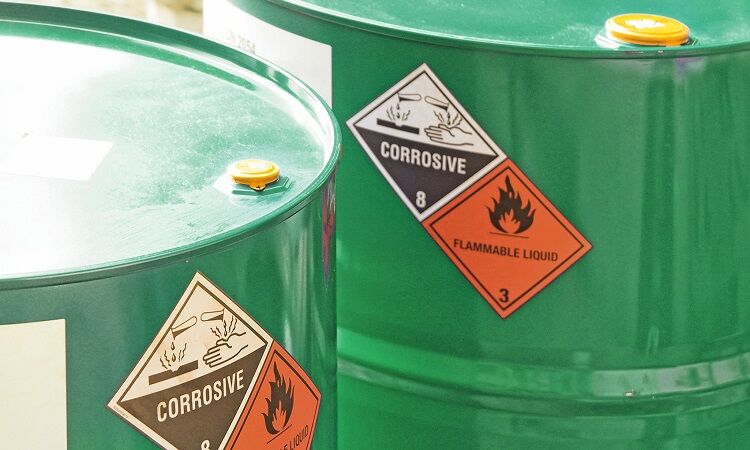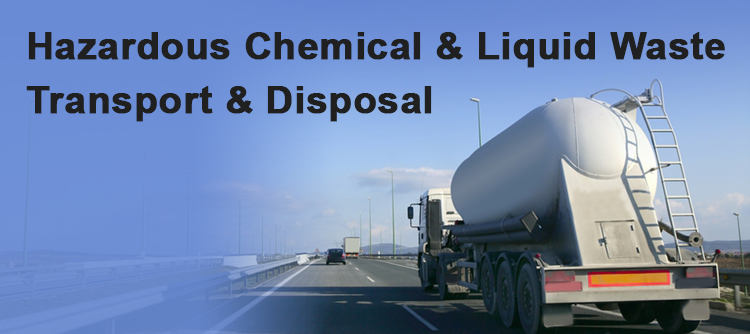Innovative Industrial Wastewater Treatment Solutions: Shielding the Atmosphere
Innovative Industrial Wastewater Treatment Solutions: Shielding the Atmosphere
Blog Article
Comprehending the Comprehensive Process of Fluid Garbage Disposal: Ideal Practices and Environmental Influence Factors To Consider
The administration of liquid waste disposal is a multifaceted issue that calls for a complete understanding of different finest methods and their associated environmental influences. From the kinds of liquid waste created to the approaches utilized for collection, treatment, and final disposal, each step plays an important duty in securing communities and public wellness. As governing requirements develop and technology breakthroughs, the discussion around these processes comes to be progressively pertinent. What effects do these modifications hold for future sustainability efforts, and just how can stakeholders make certain that they are properly addressed?
Kinds Of Fluid Waste
Recognizing the various kinds of liquid waste is necessary for effective management and disposal methods. Fluid waste can be extensively categorized into a number of types, each needing one-of-a-kind handling and therapy techniques.
Industrial fluid waste frequently has unsafe products, including heavy steels, solvents, and chemicals, generated throughout manufacturing processes. These wastes demand strict regulatory compliance to protect human wellness and the setting. Domestic fluid waste mostly refers to wastewater generated from houses, consisting of sewage and greywater, which, although much less toxic, can still posture considerable threats if incorrectly taken care of.
Agricultural fluid waste, including runoff from farms, usually contains plant foods and chemicals that can bring about environmental destruction otherwise dealt with adequately. Clinical liquid waste, created from healthcare centers, consists of contaminated fluids such as physical fluids and chemicals, needing specialized disposal methods to avoid infection and environmental contamination.
Last but not least, oil and oil waste, commonly produced by dining establishments and automobile industries, can create severe obstructions in sewage system systems if not managed properly. Recognizing these classifications promotes targeted methods for treatment, compliance with policies, and reliable disposal techniques, ultimately advertising ecological sustainability and public health safety.

Collection Techniques
Reliable collection methods are essential for the proper monitoring of liquid waste, guaranteeing that it is collected securely and efficiently before treatment or disposal. Various techniques are used relying on the type of fluid waste created, the volume, and the specific qualities of the waste.
One typical method is making use of dedicated collection tanks or sumps, which are created to record liquid waste at the resource. These systems commonly integrate pumps that facilitate the transfer of waste to larger storage space containers or therapy centers. In addition, mobile collection units geared up with vacuum cleaner innovation are utilized in circumstances where waste is created periodically or in hard-to-reach areas.
For industrial setups, closed-loop systems can efficiently decrease spills and leakages, enabling for the recuperation and reuse of liquid waste. It is additionally important to educate workers on proper collection protocols to minimize threats associated with hazardous substances.
Additionally, carrying out regular maintenance routines for collection tools guarantees optimum performance and safety and security. The combination of sophisticated monitoring systems can improve collection effectiveness by providing real-time data on waste degrees and prospective threats. Overall, effective collection methods are foundational to sustainable fluid waste administration techniques.
Therapy Processes
Therapy procedures play a crucial role in the administration of liquid waste, changing potentially hazardous materials into reusable sources or safe effluents - liquid waste disposal. These procedures can be extensively categorized into physical, chemical, and organic approaches, each customized to resolve more information particular contaminants present in the waste stream
Physical treatment approaches, such as sedimentation and purification, work by removing suspended solids and particulate matter. These strategies are commonly the initial step in the treatment chain, effectively minimizing the lots on subsequent procedures. Chemical treatments entail making use of reagents to reduce the effects of harmful materials, precipitate heavy metals, or oxidize natural pollutants, consequently boosting the safety and security of the effluent.
Organic treatment procedures, consisting of turned on sludge systems and anaerobic food digestion, take advantage of the all-natural capabilities of bacteria to break down raw material. These methods are specifically effective for wastewater including biodegradable pollutants. Advanced therapy technologies, such as membrane layer purification and advanced oxidation procedures, are progressively employed to attain higher levels of filtration.
Including a mix of these treatment methods not only makes certain compliance with regulative standards yet also promotes ecological sustainability by recouping important sources from liquid waste.
Disposal Options
Exactly how can organizations make certain the responsible and safe disposal of fluid waste? Effective navigate here disposal options are crucial for safeguarding public wellness and the setting. The key techniques consist of land disposal, incineration, and treatment adhered to by discharge into metropolitan wastewater systems.
Land disposal entails the careful control of liquid waste in designated landfills, ensuring that it does not seep into surrounding dirt or water. Incineration, on the various other hand, topics liquid waste to high temperatures, converting it into ash and gases, which require appropriate filtering to reduce emissions. This technique appropriates for contaminateds materials that can not be treated through conventional methods.
In instances where liquid waste can be dealt with, organizations might go with organic or chemical treatment processes to neutralize damaging components before discharging the dealt with effluent into local systems. This route commonly straightens with regulative needs, making certain that the effluent satisfies safety standards.
Inevitably, organizations have to conduct detailed assessments of each disposal option to establish its feasibility, considering aspects such as waste structure, regulatory conformity, and prospective dangers to health and wellness and the setting. By choosing appropriate disposal methods, services can contribute to an accountable waste management strategy.
Environmental Effect
The environmental influence of fluid garbage disposal is a vital factor to consider for organizations seeking to reduce their environmental impact. Inappropriate disposal techniques can lead to considerable contamination of water resources, dirt degradation, and damaging impacts on neighborhood ecological communities. As an example, unsafe liquids can leach into groundwater, positioning threats to drinking water materials and aquatic life. In addition, the discharge of without treatment or improperly treated waste into surface area waters can result in eutrophication, causing oxygen deficiency and the subsequent fatality of fish and other microorganisms.

To minimize these influences, companies have to take on ideal methods such as carrying out strenuous waste therapy processes, promoting recycling and reuse, and sticking to regulative requirements. By taking a positive method to liquid waste monitoring, entities can considerably decrease their environmental impact while sustaining sustainable advancement goals. Inevitably, a thorough understanding of the ecological impacts related to liquid garbage disposal is crucial for notified decision-making and responsible stewardship of natural deposits.
Final Thought
Reliable management of fluid waste is essential for securing ecological honesty and public health and wellness. Inevitably, a comprehensive understanding of liquid waste disposal not just alleviates ecological influences yet also promotes a commitment to responsible resource administration and ecological stewardship.
The monitoring of liquid waste disposal is a diverse concern that calls for an extensive understanding of numerous ideal methods and their connected ecological effects. From the types of fluid waste created to the methods employed for collection, treatment, and final disposal, each step plays an essential role in safeguarding communities and public health and wellness.The environmental effect of fluid waste disposal is an important factor to consider for companies seeking to lessen their environmental impact. Eventually, a detailed understanding of the environmental impacts associated with liquid waste disposal is essential for informed decision-making and liable stewardship of all-natural sources.
Eventually, an extensive understanding of liquid waste disposal not just alleviates ecological effects but also cultivates a dedication to accountable resource management and ecological stewardship.
Report this page